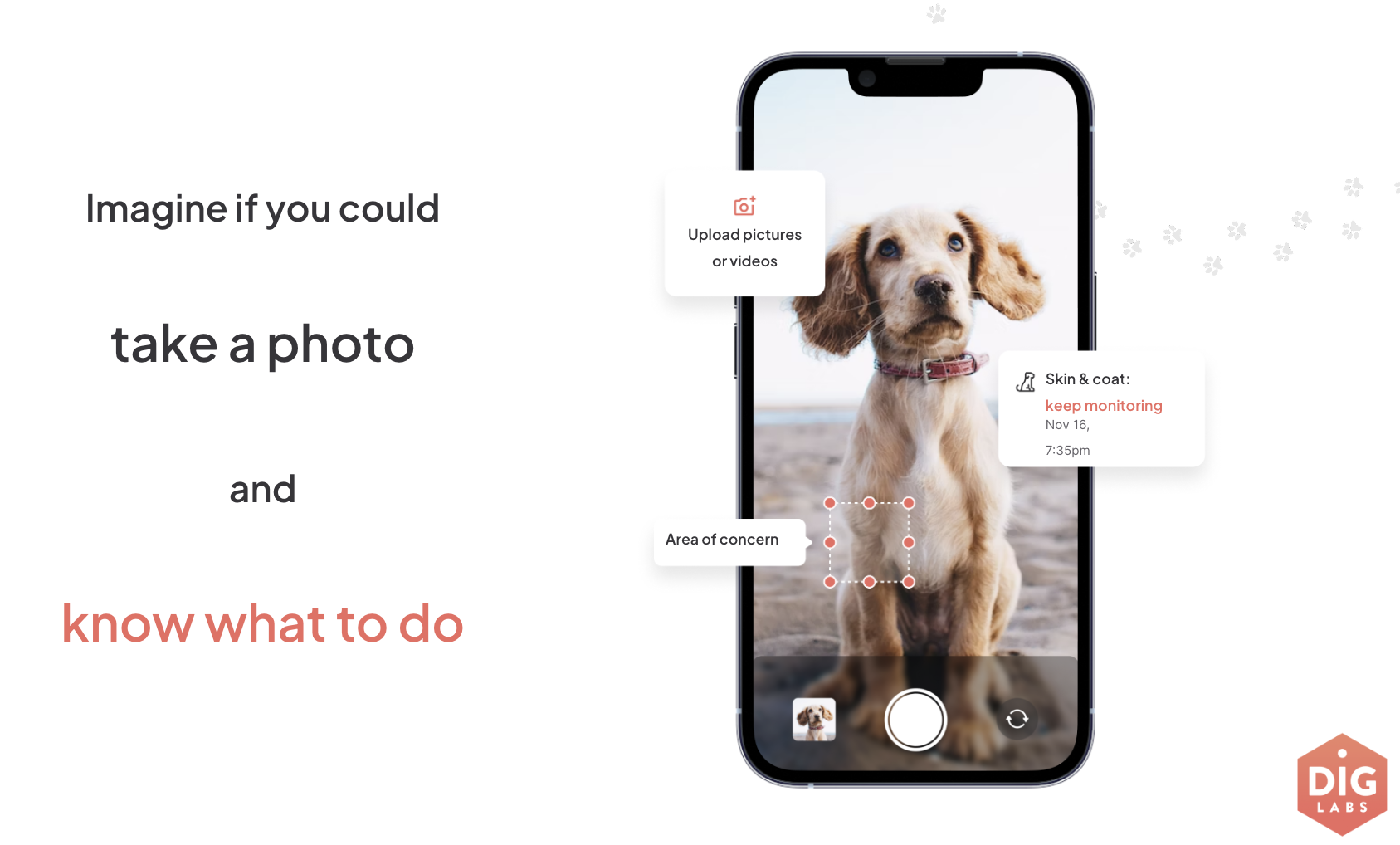- The Digital PawPrint
- Posts
- Unlocking pet health: A conversation with Tara Zedayko of DIG Labs
Unlocking pet health: A conversation with Tara Zedayko of DIG Labs

Our four-legged companions struggle to (translate: can’t) convey their health issues in words, leaving a lot for pet parents to interpret. Enter DIG Labs, a solution at the intersection of technology and data insights, working to solve a profound issue faced by pet owners globally: the challenge of deciphering and addressing their pets’ health concerns.
We sat down with Tara Zedayko, co-founder and CEO of DIG Labs, to hear about how the company is leveraging visual AI to “talk” to pets and help pet parents decide if they need more urgent care.
Let’s start by talking about your sweet dogs. Can you introduce us to Juney and Kiba?
Absolutely! Juney is our 10-pound Chihuahua rescued from Oklahoma, and Kiba is our 30-pound rescue from Korea. Kiba was initially a foster, but as fate would have it, we fell in love with her and she found her forever home with us.
Why did you decide to build a solution for pet health?
I’m an engineer by trade and I spent 14 years in the corporate space at Johnson and Johnson. Throughout my career in human health tech, I’ve been dedicated to translating deep tech into accessible consumer language. When it came to taking care of my own dogs, I noticed a significant gap in communication about pet health.
Pets can’t tell us what’s wrong, and as pet parents, we’re always searching for clues so we can be good caregivers. Many pet parents say they wish they knew about an issue sooner, so they could have addressed it earlier. The goal with DIG is to bridge this gap by leveraging visual AI, which we believe is a powerful tool to provide insights to pet parents and ensure timely access to quality care.

How can visual AI address challenges in the pet health space, especially when pets can’t communicate their health issues directly?
We see two main benefits of visual AI. First, images are a more valuable source of information than pet communication because pictures can explain a situation. Second, with a shortage of veterinarians, providing timely access to care is crucial. Vets in high demand have a long waitlist. Visual AI can give pet parents insights into their pets’ health, so they can take appropriate action if they need to see a vet.
AI is a tool, not a replacement for a standard of care. It can provide rapid responses and help pet parents decide if they should wait for symptoms to improve or if they need to take their pet to the emergency vet. When pet parents and vets have point-in-time information, for instance, photos taken routinely at home over five days, they can more accurately monitor and address the situation. DIG Labs is expanding pet care beyond the in-office experience to provide before, during, and after-visit care.
What are some common scenarios that the DIG Labs tool helps with?
DIG Labs often helps pet parents make decisions about the level of care needed for their pets, whether it’s assessing the need for a vet visit or monitoring recovery post-surgery. A focus on recovery monitoring might lead to recommendations for continued home care, while other cases might suggest a prompt vet visit. For instance, after a spay or neuter, consistent imaging of incisions after surgeries can help the pet parent know if their pet isn’t recovering well and needs to visit the vet.
What powers DIG Labs’ backend and content engine?
We use various data points, from uploading photos to incorporating information like weight and age for more comprehensive insights. Our content engine is powered by hundreds of millions of data points and nearly 100,000 images, so we can have a 360-degree visual view of a pet’s health. While we have patents for our AI technology, we also embrace open-source libraries and are open to integrating with other AI tools.
Transitioning to the business side, who are DIG Labs’ primary customers, and how has the company evolved from its initial D2C model to an enterprise B2B SaaS model?
Our primary customers are organizations rather than individual pet owners. We started as a D2C company and pivoted to an enterprise B2B SaaS model after larger companies wanted to white-label our technology. This shift allowed us to have a greater impact and reach hundreds of thousands of users through an enterprise approach. Rather than aiming to be a household name, we position DIG Labs as the intel that powers other companies.
Looking ahead, how far do you envision visual AI going in diagnosing pet health issues, and what role can it play alongside traditional diagnostics?
In the long term, while visual technology might not replace traditional diagnostics tomorrow, it can significantly complement them to support vets and pet parents dealing with a shortage of access to vets. DIG Labs has patented the use of images to predict the results of lab assessments that traditionally require lab specimens like microbiome analysis, and we’re working on predicting results for more tests. Our goal is to ensure that pet parents are performing the right tests at the right time, by providing preliminary insights and bridging gaps in access to certain diagnostics.